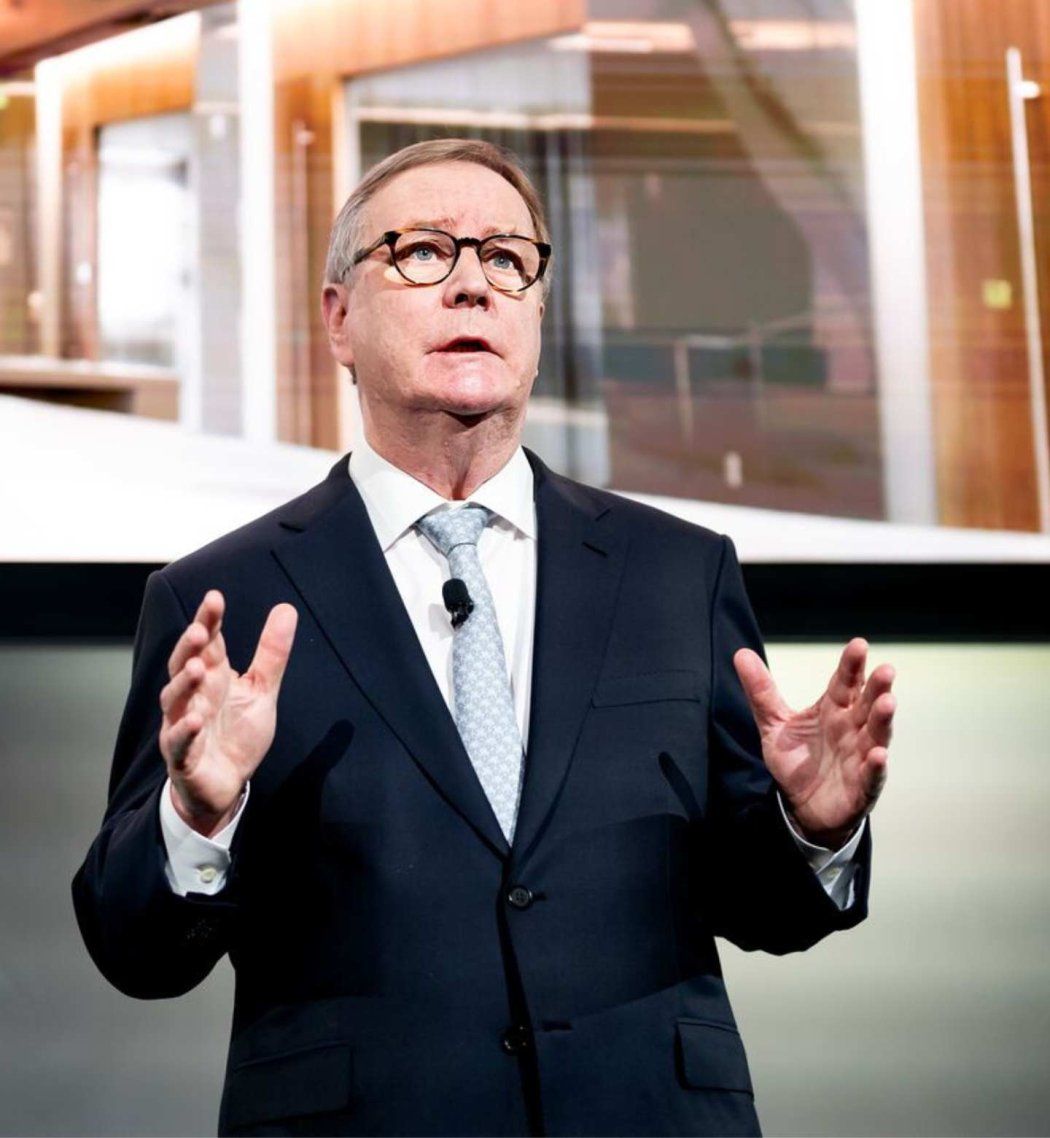Defined as the product of mass and velocity, “momentum” is derived from physics. It also describes UC San Francisco’s journey in the past decade under Chancellor Sam Hawgood’s leadership.
“When I delivered my first State of the University address in 2014, I made the case that we were at an inflection point in our history that required thoughtful adaption to future forces reshaping our environment,” Hawgood, MBBS, said in his annual address. “Now, 10 years later, I am even more excited to be your chancellor. I believe the premise of my 2014 address has been borne out.”
This year’s address celebrated Hawgood’s 10th year as chancellor, a milestone underscored by the progress, innovation and development across the university during his tenure.
An ‘expanding footprint’
That growth starts within the UCSF community.
Since Hawgood became chancellor in 2014, the UCSF workforce has grown from roughly 22,000 people to exceeding 36,000 people today.
“Numbers are one measure but resiliency in our workforce will only be truly achieved when we reflect the diversity of our state, and everyone feels they belong,” he said.
UCSF is making gains diversifying its faculty, staff and student body, he noted.
The rapidly growing UCSF community is working across an “expanding footprint” in the Bay Area and Central Valley, including 11 new state-of-the-art research, patient care, academic and housing facilities opened or started in San Francisco since 2014.
“We are providing our patients, families, scientists, clinicians, staff and learners with the best places possible to heal, work, discover and learn,” Hawgood said of the growth over the 10-year period.
The facilities – including the groundbreaking of a new hospital, and academic and research building – all incorporate the latest in technology, equipment, lighting and sustainable design. Though UCSF’s overall campus footprint has grown 18% in square footage over the past decade, the university’s operational carbon footprint, including building energy uses and transportation, has decreased by 34%.
Overall, carbon emissions per square foot have dropped by 44%.
The UCSF Barbara and Gerson Bakar Research and Academic Building, will be home to cross-disciplinary programs like the UCSF Bakar ImmunoX Initiative, which leverages advanced technologies and a data sharing model to support a community of researchers and clinicians as they work toward solutions together.
“By restructuring traditional research silos, the goal is to create opportunities for cross-fertilization of ideas, discoveries and insights,” Hawgood said.
When it opens in 2028, the building also will be home to the UCSF School of Nursing and include space for graduate-level education. The new UCSF Health Helen Diller Hospital, a state-of-the-art facility, will begin admitting patients in 2030. “This may seem to be an ambitious capital plan, but all these new facilities will keep us competitive for the most talented faculty, staff and learners from around the world,” he said.
These buildings don’t come without remarkable financial resiliency, Hawgood explained.
In the last decade, UCSF’s total revenues have increased by 130% from a $4.9 billion enterprise to $11.4 billion. Of that revenue, UCSF has earned $20 billion from more than 21,000 sponsored awards since 2014.
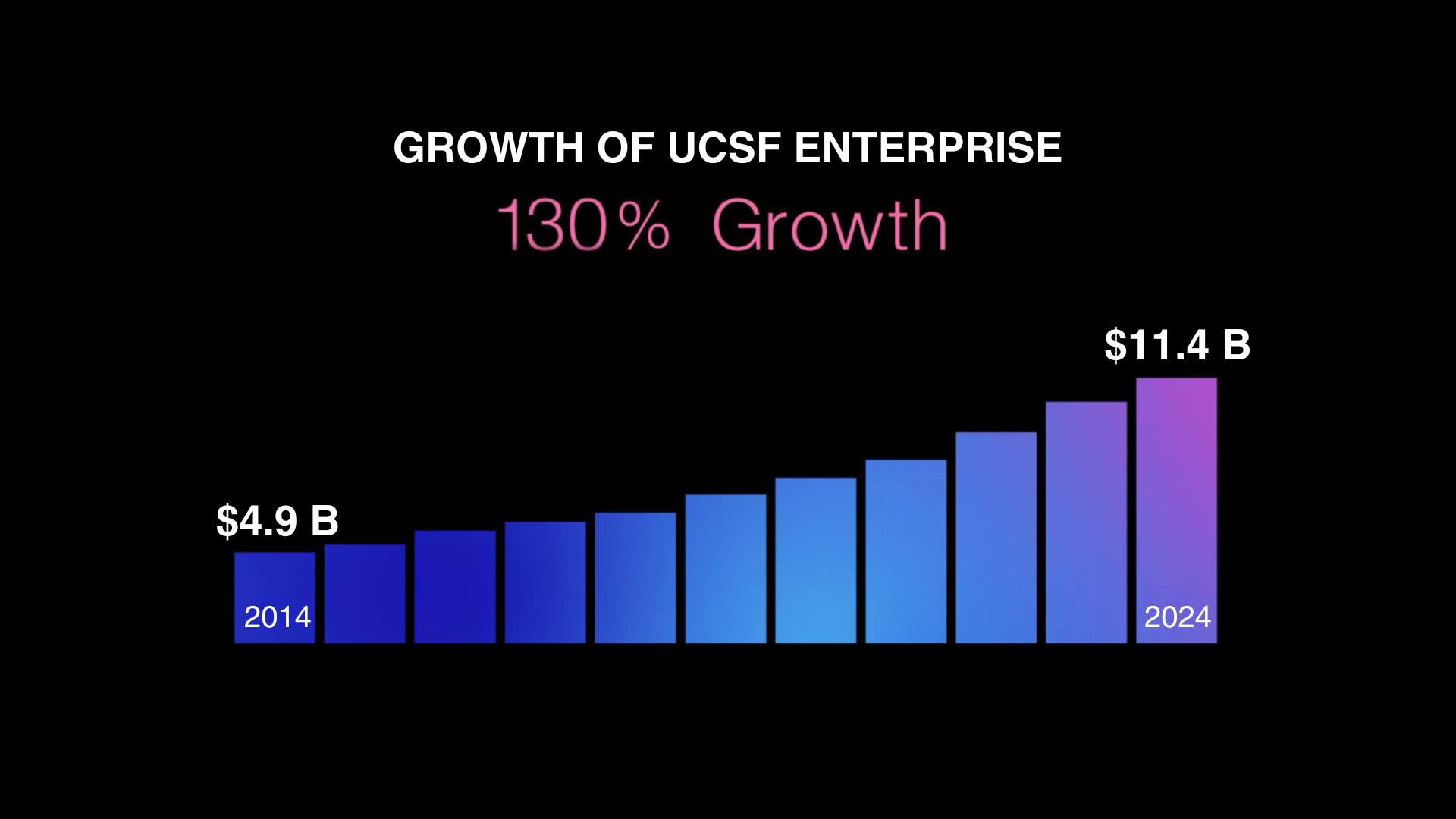
“From curiosity-driven discovery science, still and forever the bedrock of our research mission, to translational, clinical, policy and global research, our programs unlock new insights into the human condition and improve the health and welfare of people around the world,” Hawgood said.
With the infusion of newly approved building projects, a comprehensive debt model, and continued strong financial performance of UCSF Health and the research and academic areas, Hawgood said revenue is projected to double to $22 billion by 2034.
Growth of UCSF Health
Over the past decade, UCSF Health expanded from two hospitals in San Francisco in 2014 into a health care system comprised of eight hospitals and several clinics throughout the Bay Area in 2024 – accounting for 64% of UCSF’s total budget.
Part of that growth comes from the August acquisition of St. Mary’s and Saint Francis, which added 1,800 teammates and community physicians to the UCSF workforce. With increased staffing and investment at the two historic San Francisco hospitals, Hawgood said more patients will be able to get primary and secondary care from UCSF Health.
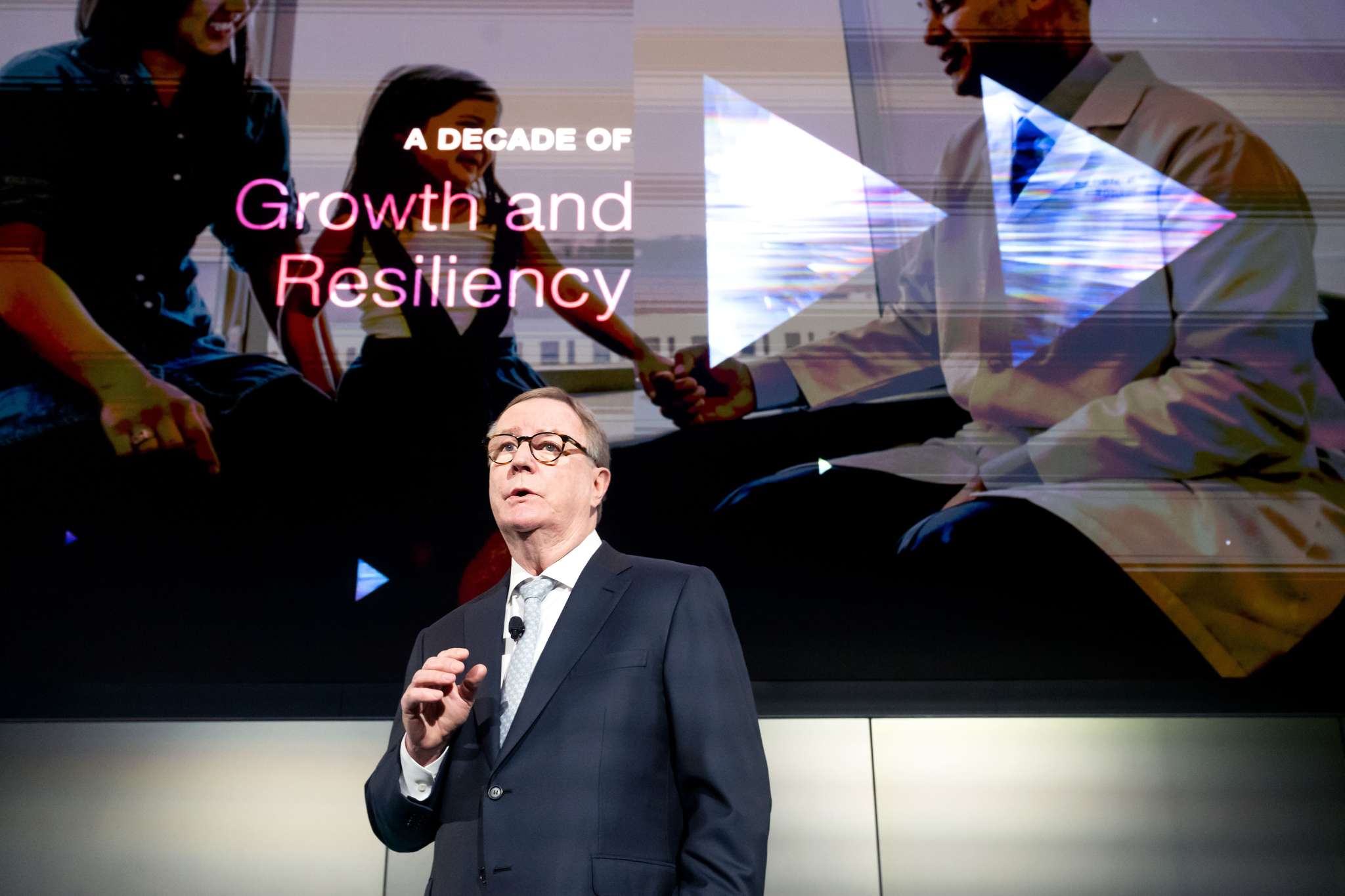
“This expanded access matters to the patients who trust us with their care,” he said. “The quality of that care has never been higher as determined by outside rating agencies.”
As UCSF Health plans to continue opening new medical office buildings, ambulatory surgery units, imaging and infusion centers throughout the Bay Area, “more patients will be able to get the care they need closer to their home or work,” Hawgood added. In addition, UCSF provides care to hundreds of thousands more patients who are seen by faculty at Zuckerberg San Francisco General Hospital and Trauma Center and the San Francisco Veteran’s Affairs Hospital.
Innovation, tech and discovery
The past decade at UCSF has been propelled by innovation and technology, Hawgood said, highlighting the work being done by the Bakar Computational Health Sciences Institute, steered by Atul Butte, MD, PhD; the Chan Zuckerberg Initiative, a philanthropy founded by Priscilla Chan, MD, a UCSF alumna, and her husband Mark Zuckerberg; and the Chan Zuckerberg Biohub San Francisco, led by Joe DeRisi, PhD.
It goes without saying we must continue to invest in tomorrow’s opportunities and technologies.
Sam Hawgood, MBBS
The Biohub, in partnership with the Chan Zuckerberg Initiative, recently developed CZ ID, a groundbreaking tool that can detect pathogens using sequencing data. The tool – a technology which will soon be transferred to UCSF – allows that data to be uploaded to the cloud for analysis from researchers here and around the world.
“These examples of our adaptation to the innovation occurring around us and across the globe over the last decade are critical to our future,” Hawgood said.
Since 2014, the university has issued more than 3,000 patents and started 102 new companies based on UCSF discovery science. Those companies have raised $4.2 billion and possess a current market valuation of $22 billion.
Just last year, Innovation Ventures oversaw 12 new UCSF startup companies.
“It goes without saying we must continue to invest in tomorrow’s opportunities and technologies,” Hawgood added.
In the community
UCSF has historically been and will always be a community-focused public institution. A key part of that work is the Anchor Institution Mission, which focuses its efforts in three areas:
- Developing the local workforce, including our own employees.
- Supporting small, locally owned businesses.
- Investing in activities that directly contribute to improving the lives of those living in under-resourced communities.
In August, UCSF received a “transformative” $14 million gift from the Crankstart Foundation to create a workforce development program for the purpose of training about 2,000 San Francisco residents over the next five years for careers in health care, Hawgood noted. The initiative will provide career advancement for people from historically underinvested communities in the Bay Area, as well as UCSF employees.
Hawgood also recognized the UCSF Benioff Homelessness and Housing Initiative, and continued strengthening of health care and medical education in the San Joaquin Valley through the UCSF School of Medicine’s San Joaquin Valley PRIME program.
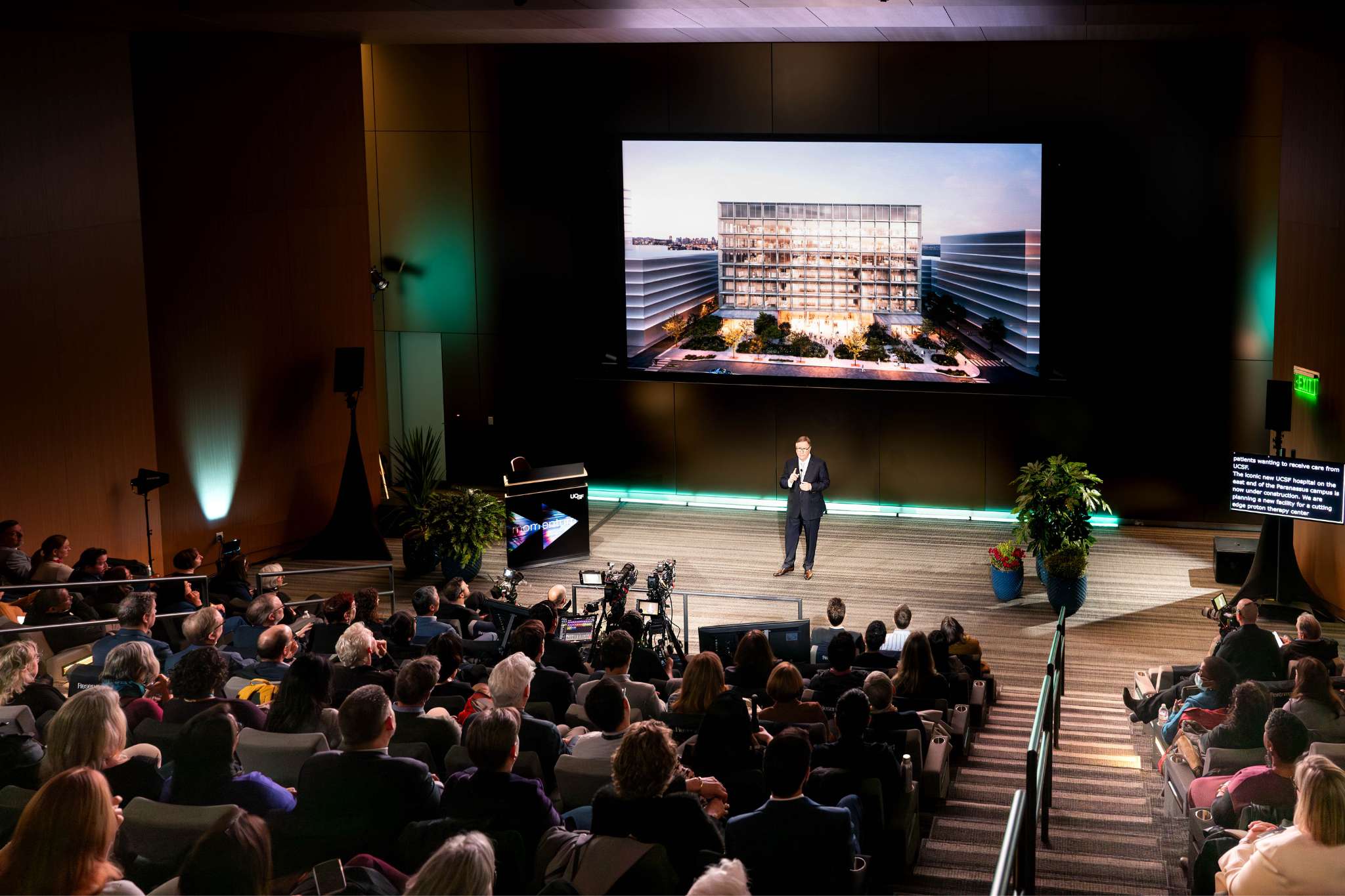
In 2023, the very first San Joaquin Valley PRIME+ Baccalaureate class of 15 students, all from the Central Valley, matriculated at UC Merced with conditional acceptance to the UCSF School of Medicine. The university’s goal is to increase class size to 50 and eventually shift the MD degree granting institution from UCSF to UC Merced.
“We are proud to be part of our communities that surround and support us, not separate from them,” he said. “It is imperative that we never lose sight of our obligation to invest in, engage with and support our communities whenever and however we can.”
Overcoming barriers
During the last decade, UCSF has experienced significant disruption and recovery.
Just months after Hawgood was appointed UCSF’s 10th chancellor in 2014, the World Health Organization declared the Ebola outbreak a public health emergency of international concern. UCSF became the only medical center in San Francisco and one of just 35 across the country to be designated as a national Ebola treatment center.
That was just a glimpse of what was to come in 2020 when the COVID-19 pandemic surfaced.
UCSF was able to mount a coordinated defense thanks to the trust built in long-standing relationships in the community. The university’s strong partnership with UCSF alum Grant Colfax, the director of the San Francisco Department of Public Health, was critical in saving lives and addressing disparities during the height of the crisis. “All of us at UCSF can be proud of how we responded to and recovered from COVID-19, a tribute to what can be done when we work together,” Hawgood said.
We continue to work to overcome barriers to health equity.
Sam Hawgood, MBBS
Those lessons learned reverberate in UCSF’s equity-approach across its mission areas today.
“We continue to work to overcome barriers to health equity,” Hawgood said.
UCSF also navigated social issues in Hawgood’s time as chancellor, including the death of Black Americans at the hands of law enforcement. UCSF’s work to advance diversity, equity and inclusion over the past decade includes the founding of the Differences Matter initiative in 2015, and the establishment of a campus-wide anti-racism initiative that began under the leadership of Vice Chancellor Renee Navarro, MD, PharmD, in 2020 while the country grappled with the death of George Floyd in Minneapolis.
Issues at home and abroad continue to divide, Hawgood said in addressing the ongoing conflict in the Middle East.
“We have significant work to do in the coming months and years to restore trust in, and empathy for, one another and to enable dialogue across differences,” he said.
Hawgood highlighted the upcoming Community Climate Survey as an opportunity to listen to the UCSF community on issues of inclusivity and belonging. The survey, conducted every three years, will be deployed to the UCSF community in early 2025.
“The truly important issue is that we remember and learn from these disruptions, the good and the bad, so that we move forward stronger as a community,” he said.
Beyond tomorrow
Building on remarks he made in his 2023 State of the University address about the emergence of artificial intelligence, Hawgood underscored the university’s duty to deploy AI “responsibly and at scale across our mission areas.”
“To be successful we will need to focus on talent and infrastructure,” he said. “A big part of our work in the coming years will be to ensure we have the right mix of disciplines represented in our faculty and staff and that they and our learners are prepared to use these new platforms effectively and responsibly.”
We must continue to be bold and recruit the truly curious, those working on the edge of existing knowledge.
Sam Hawgood, MBBS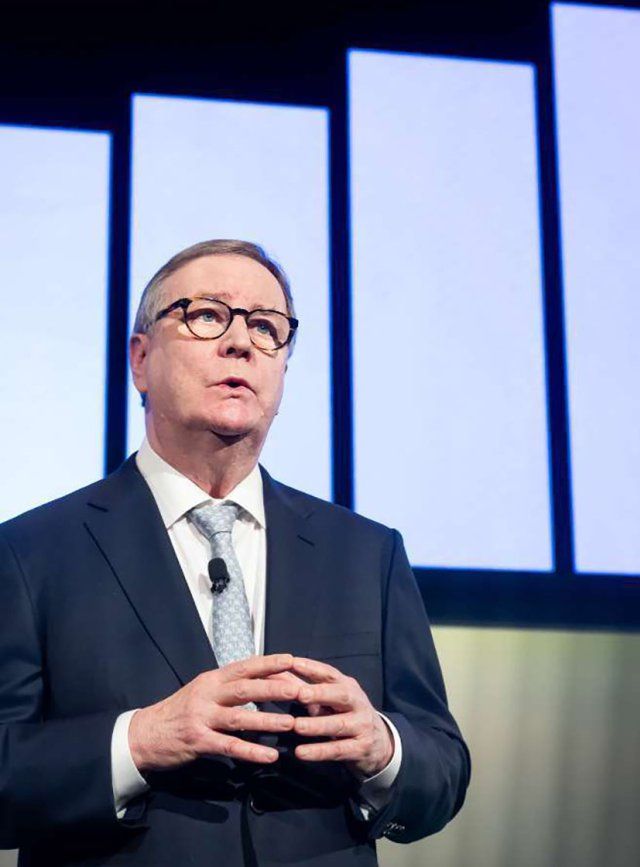
UCSF has started graduate and master’s programs in the last two years to train the next generation across disciplines, including partnerships with UC Berkeley. UCSF Health will also look to further integrate AI and digital transformation in future strategic planning, he added.
“AI and digital transformation need to be just one facet of a larger innovation strategy for the next decade,” Hawgood said.
To close the program, Hawgood showcased a short film featuring five exceptional leaders from the UCSF community, all addressing their respective roles in building health care and discovery sciences for the next generation:
- Jaysón Davidson, PhD candidate, UCSF School of Pharmacy
- Nisarg Patel, MD, DMD, oral and maxillofacial surgery chief resident, UCSF School of Dentistry
- Margaux Pinney, PhD, Sandler Fellow, UCSF School of Medicine
- Alli Gomez, San Joaquin Valley PRIME student, UCSF School of Medicine
- Taylor Cuffaro, MS, PhD candidate, UCSF School of Nursing
The leaders are at the forefront of the university’s embrace of a “growth mindset,” which Hawgood pointed to as a north star for the last decade and the next one at UCSF.
“Curiosity-driven discovery science will remain the wellspring of innovation in our research environment. We must continue to be bold and recruit the truly curious, those working on the edge of existing knowledge,” he said.
Meet Chancellor Sam Hawgood
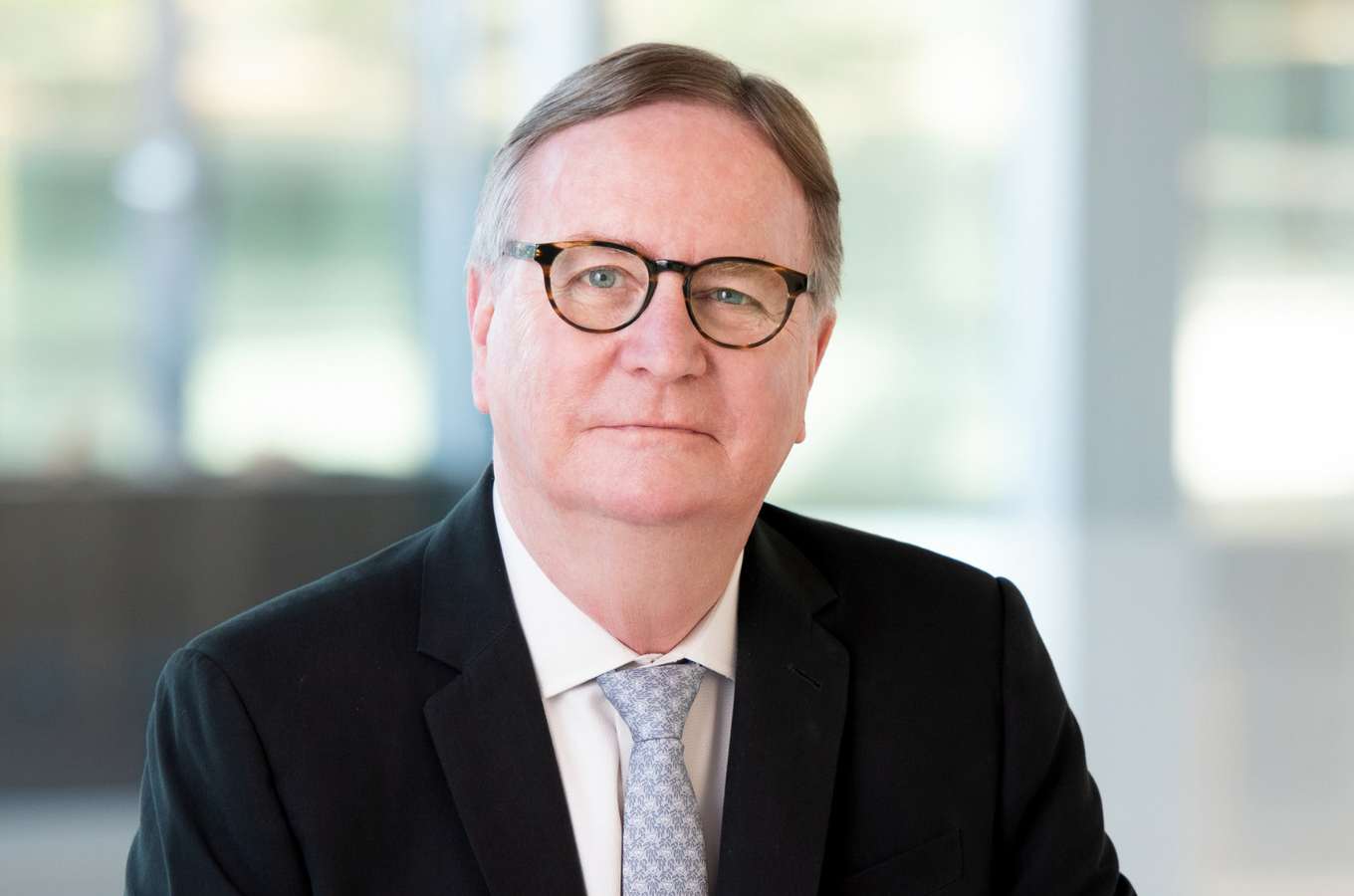
A renowned researcher, professor, academic leader and pediatrician, Hawgood holds the title of Arthur and Toni Rembe Rock Distinguished Professor. The native of Brisbane, Australia joined UCSF in 1982 as a research fellow, later serving as chief of the UCSF Division of Neonatology, chair of the UCSF Department of Pediatrics and physician-in-chief of UCSF Benioff Children’s Hospital before being appointed dean of the UCSF School of Medicine.
Read More
